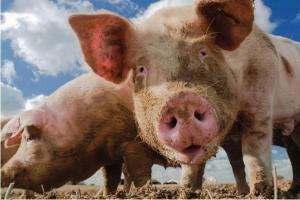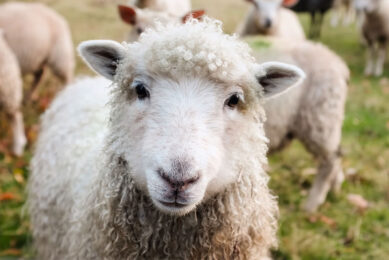Genetic selection for reduced residual feed intake

Selecting pigs for reduced residual feed intake (RFI) improves feed efficiency, and reduces physical activity, according to a study published in the Animal journal. This is a summary of that study which can be purchased using the link below.
Residual feed intake (RFI) is the difference between observed feed intake and the feed consumption predicted for maintenance and production based on standardised equations. Animals with a low RFI are more efficient at converting feed into meat and milk than those with a high RFI.
Researchers from INRA, France, assessed the effect of genetic selection for reduced RFI on the physical and behavioural activity of group-housed growing pigs, together with the impact on energy expenditure. Successive batches from the 7th generation of selection were raised in collective pens equipped with a single-place electronic feeder (SEF) from 10 weeks of age to 100 kg body weight. Each batch included four groups of 12 pigs: high RFI castrated males, high RFI females, low RFI castrated males and low RFI females.
Health indicators evaluated at 17 weeks
At 17 weeks of age, behavioural activity of individual pigs was video recorded for 24 hours and indicators of health were evaluated, for example increased severity of lameness, body lesions, bursae and tail biting. All pigs spent most of their time lying, accounting for around 80% of the day and over 89% of night activities.
Compared to the high RFI pigs, the low RFI pigs showed a lower proportion of health problems, used the single-place electronic feeder less and spent less time standing throughout the 24-hour period. In terms of energy costs, these differences in activity meant that the low RFI pigs had a 14% lower daily metabolisable energy intake than the high RFI pigs.
Low RFI line seemed to be less affected by locomotor problems and tail damage
The researchers concluded that the lower physical activity of low RFI pigs, which has been described previously in individually penned pigs, is confirmed in group housed pigs. Also, selecting for reduced RFI to improve the feed efficiency of pigs, diminishes daily feed intake. The lower physical activity associated with reduced energy expenditure in low RFI pigs compared with high RFI pigs contributed significantly to their improved efficiency and was not related to worsened health scores.
Although no major health problem was detected in the study, the researchers also reported that the low RFI line seemed to be less affected by locomotor problems and tail damage, possibly related to their lower activity level.
Animal vol 8 Issue 11
M. C. Meunier-Salaün, C. Guérin, Y. Billon, P. Sellier, J. Noblet and H. Gilbert
Source: Cambridge Journals
Join 26,000+ subscribers
Subscribe to our newsletter to stay updated about all the need-to-know content in the feed sector, three times a week. Beheer
Beheer









 WP Admin
WP Admin  Bewerk bericht
Bewerk bericht